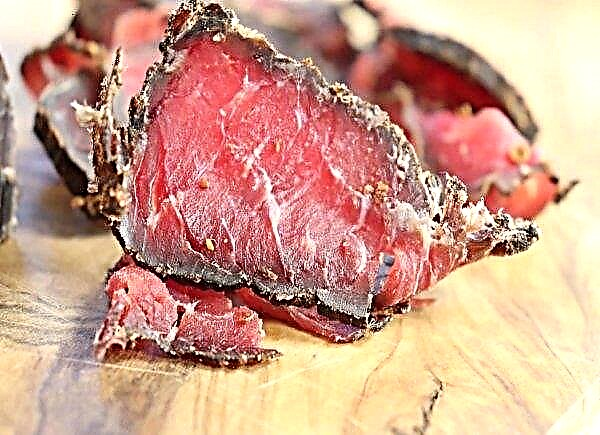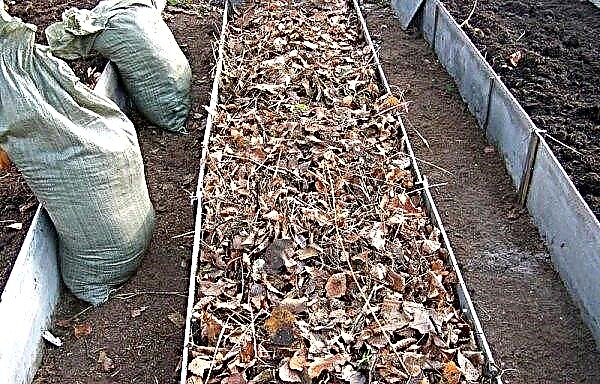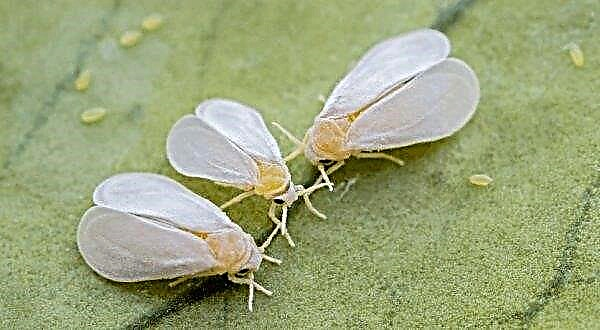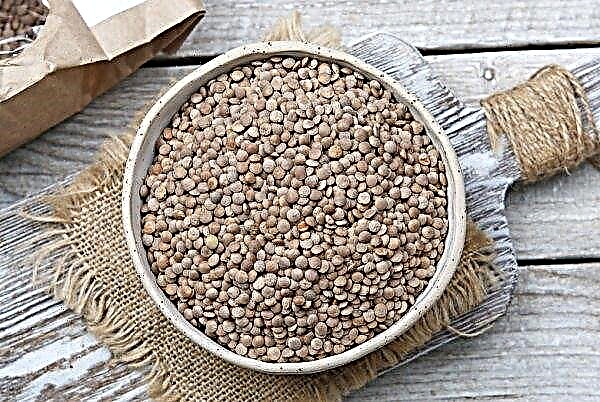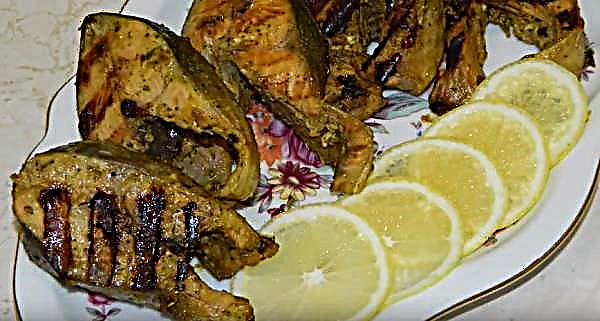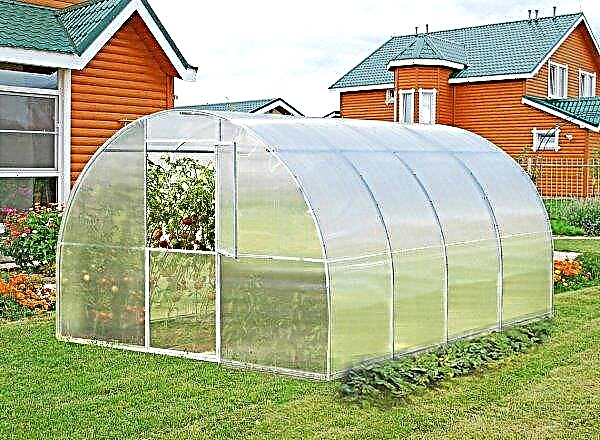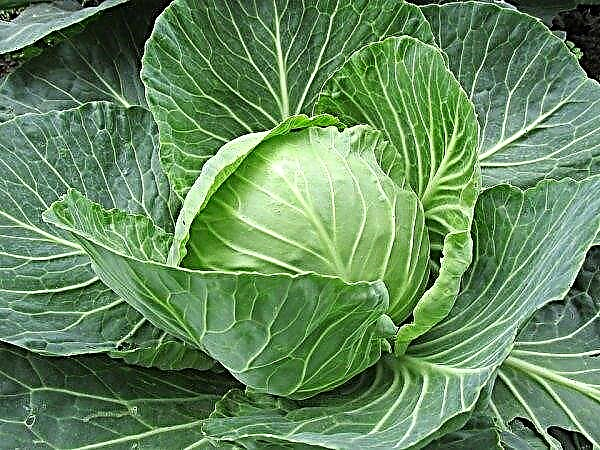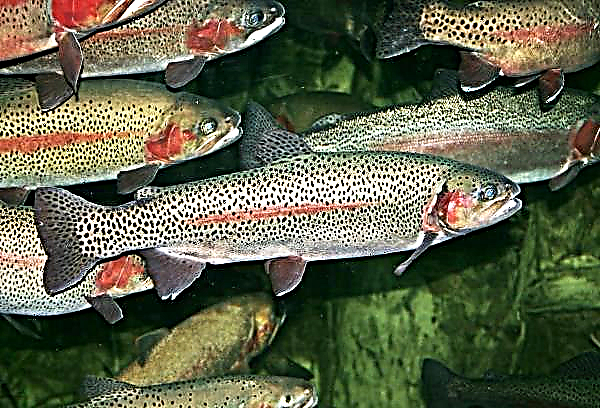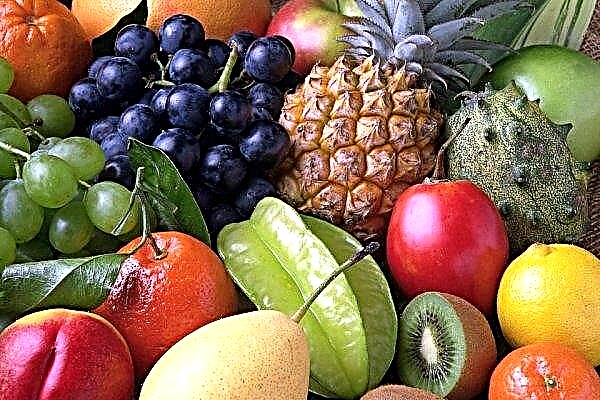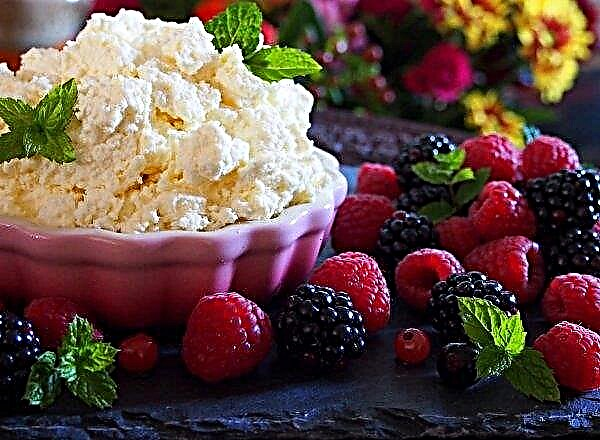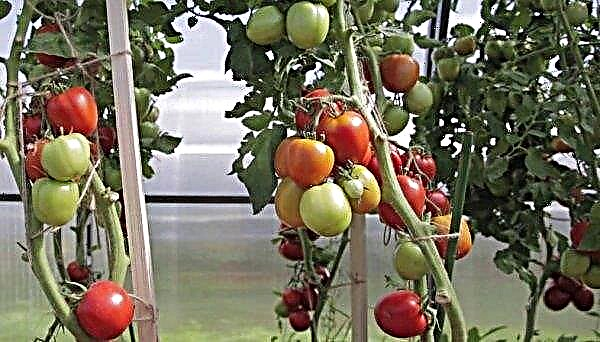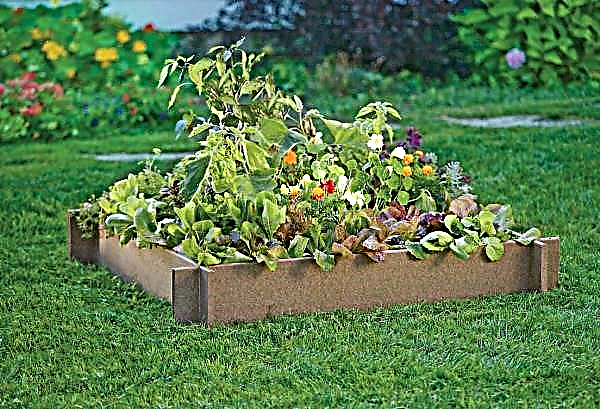Dracaena Godsefa is a variegated perennial evergreen shrub. It differs from other species not only in the form of foliage, but also in the growth of shoots. About the main features and rules of growing plants at home, read below.
Description of Godcef Dracaena
Under natural conditions, Godsef's dracaena reaches a height of 8 m, at home - up to 1 m. The ovate leaf plates are pointed at the ends. Their width is 4 cm, length is 16 cm. Collected in false whorls of 3-5 pieces. The leaves are covered with spots from light green, almost white to dark green. The roots of the plant are powerful, tuberous.
Did you know? Dracene juice is used in cosmetology to improve the structure of colored hair. If you make a mask at home with the juice of this plant, the dyed hair will acquire a beautiful healthy shine.
Painted in orange-yellow. Stems erect, thin. Flowering is observed only in natural conditions at a young age. It comes in June and ends in August. At home, in order for the plant to bloom, you need to create specific conditions. Flowers are gathered in the top bouquets, painted yellow-green.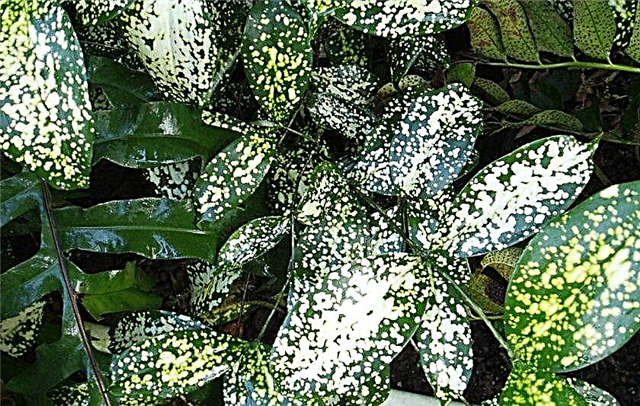 A pleasant aroma intensifies, intensifying at night. After flowering, in place of each flower, drupe berries of red color are formed. The plant is resistant to most diseases characteristic of indoor crops. The only reason leaves can curl and fall off is improper care.
A pleasant aroma intensifies, intensifying at night. After flowering, in place of each flower, drupe berries of red color are formed. The plant is resistant to most diseases characteristic of indoor crops. The only reason leaves can curl and fall off is improper care.
Advantages and disadvantages of growing
The correct assessment of the advantages and disadvantages of a particular plant allows you to timely eliminate errors made during its cultivation.
- Key Benefits of Godsef Dracaena:
- attractive decorative look;
- unpretentiousness in leaving;
- low growth rate, which makes it possible not to engage in plant transplants too often and not worry about crown formation;
- quick adaptation to any microclimate conditions;
- disease resistance.
- Among the shortcomings can be identified:
- lack of flowering at home;
- high pest damage.
What you need to do immediately after purchase
After buying a new plant, you need to transplant, regardless of the season. The fact is that plants intended for sale are planted in small pots, adding a lethal dose of fertilizer to the rapidly depleted loose soil, consisting mostly of peat. This is enough for the plant to retain its decorative appearance for some time. But due to the fact that the roots quickly deplete a small area of nutrition.
Important! According to Feng Shui teachings, Godsef should be located in wealth sectors - in the southern, southeastern part of the house. But do not get too carried away with such advice - on the south window under the scorching sunshine, Godsef can get burns.
After 2 months, the plant begins to suffer from a lack of vitamins. Transplantation is not carried out immediately after purchase. The plant needs to be given a month to adapt to new conditions. Immediate transplantation is required if you knowingly buy a plant in poor condition. For example, in the store for such plants is often a big discount.
A few recommendations that should be observed when buying this variety of dracaena:
- Carefully inspect the plant for pests. Leaves should be dense, stems even without deformation.
- Pay attention to the quality of the soil. There should be no mold on it.
- After the purchase, set the plant away from other representatives of the fauna that are already at home - even completely healthy-looking plants can be affected by pests.
- Re-examine for pests, preferably using a magnifier.
- Create optimal microclimate conditions and observe the state of the plant for a month.
- After a month, transplant the plant. If necessary, you can completely replace the depleted earthen lump with a new nutritious soil mixture.
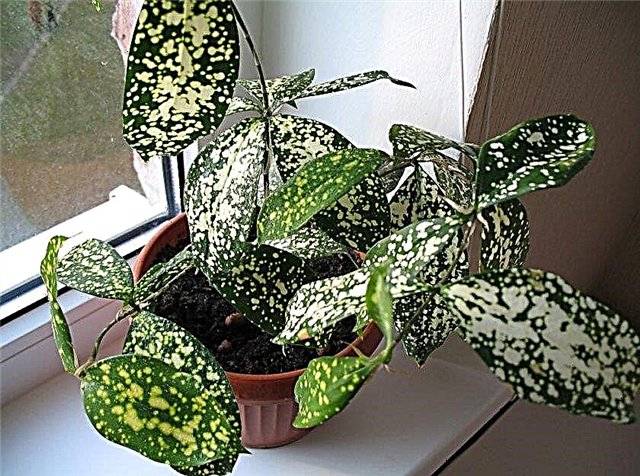
Growing and caring at home
Dracaena Godsef is not demanding in leaving. It adapts very quickly to any conditions, but some rules should be followed to maintain its decorativeness.
Microclimate
Optimal microclimate conditions for Godsef dracaena:
- air temperature - refers to cold-resistant plants, feels great at temperature conditions in the range from + 12 ° C in winter to + 28 ° C in summer, in winter does not require intentional temperature reduction;
- lighting - plentiful, scattered, requires high-quality protection from direct sunlight;
- air humidity - 70–75%;
- soil moisture - 50%.
Did you know? Rigid sheet plates of many types of dracaena are used to create fibers from which rope rope is then made.
Watering and feeding
Watering is required moderate. The main thing is to ensure that there is no excess of moisture, otherwise the roots will begin to rot. The watering schedule completely depends on the microclimate conditions. In summer and winter, the soil should be evenly moistened. Moisture must be applied after drying of the topsoil 0.5 cm in depth. Water should be supplied under the root. For irrigation, only clean, settled water is used. The temperature of the water must match the ambient temperature.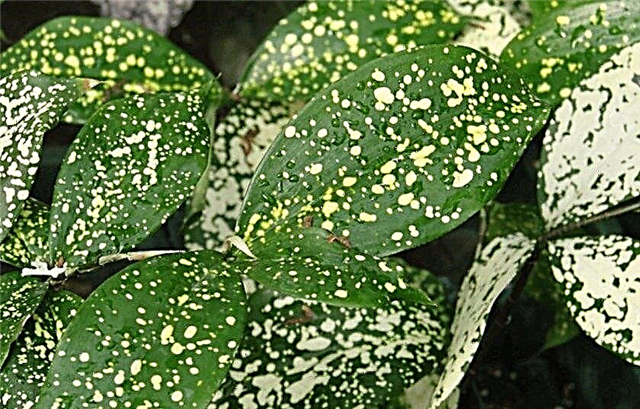 On average, in the summer, watering is carried out 2-3 times a week, in winter - once a week. It is best to use a watering can with a long nose. In order not to wash away the soil from the roots and not to bare them, it is better to make a small ditch along the edge of the pot and pour water into it. If you do not feed, Godcef dracaena will cease to grow. Fertilizers are applied 2 times a month, starting in March, ending in November.
On average, in the summer, watering is carried out 2-3 times a week, in winter - once a week. It is best to use a watering can with a long nose. In order not to wash away the soil from the roots and not to bare them, it is better to make a small ditch along the edge of the pot and pour water into it. If you do not feed, Godcef dracaena will cease to grow. Fertilizers are applied 2 times a month, starting in March, ending in November.
To increase soil nutrition, adapted complex fertilizers for dracaena are best suited. The drug “Stimovit Ferti” proved to be quite good. For root and foliar top dressing, the drug is diluted in a ratio of 1:40 with water. Under the root, instead of watering, fertilizer is applied once a week, as foliar top dressing is used every 2 weeks.
Important! It is permissible to make top dressing after transplantation only after a month, otherwise the roots may get burned from an excess of nutrition.
For foliar top dressing, you can also mix the following composition yourself:
- potassium nitrate - 0.5 g;
- ammonium sulfate - 0.3 g;
- potassium phosphate - 0.4 g.
Trimming and shaping the trunk
Unlike other types of dracaenas, the variety in question does not require trimming, gartering and installation of supports. The only case when pruning is carried out is the loss of a decorative look by the stem. In this case, it is shortened, and the remaining stalk is used for propagation.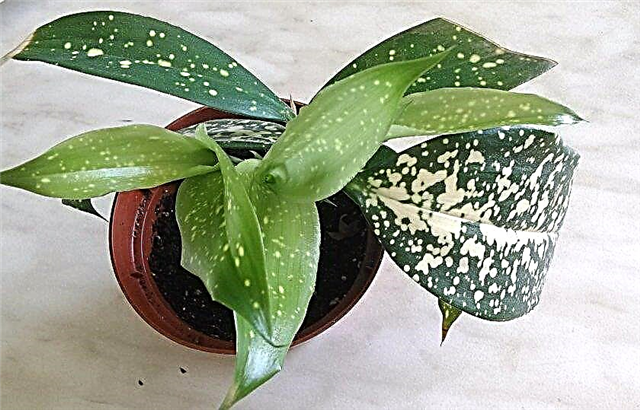
Dates and technology of transplantation
Godsefa's planned transplant is carried out in the spring, in March-April. Due to the fact that the plant develops slowly, the procedure is carried out no more than once every 2-3 years. The new capacity should be 1 cm larger in height and diameter. In a very large capacity, the flower may die, since its root system will begin to develop to the detriment of the ground part. The pot is best selected from high-quality plastic - in clay pots in the winter the roots will suffer from the cold, and in the summer from overheating.
Soil for dracaena can be bought in a store or mixed independently, combining in equal parts:
- compost;
- peat;
- sand.
To this composition you need to add 20% of the total mass of charcoal. This will protect the root system from diseases and pests, as well as nourish the soil with potassium and calcium. The day before the transplant, you need to water the plant. In the morning, rinse the new container with Furatsilin solution (1 tablet per 100 ml of boiling water). At the bottom of the tank lay a layer of expanded clay 1–2 cm, depending on its dimensions.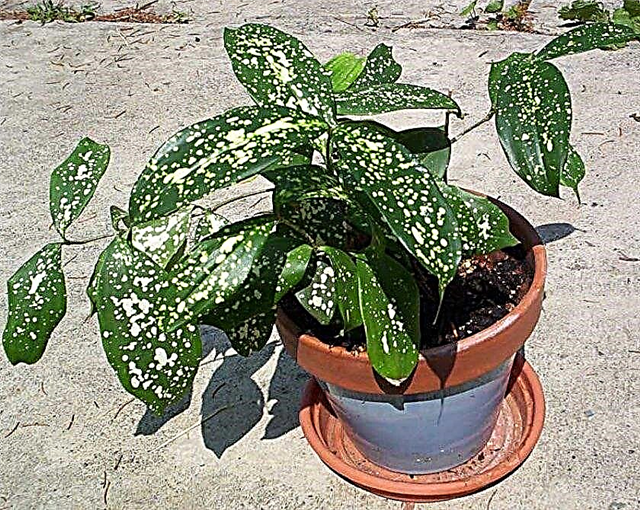 After that, a third of the tank is filled with soil. The plant is carefully removed from the old container with an earthen lump and transferred to a new pot. After the voids are covered with soil, the plant is set aside for a week in a darker room. After this time, you can slightly moisten the soil, if necessary, and rearrange the tank to a permanent place.
After that, a third of the tank is filled with soil. The plant is carefully removed from the old container with an earthen lump and transferred to a new pot. After the voids are covered with soil, the plant is set aside for a week in a darker room. After this time, you can slightly moisten the soil, if necessary, and rearrange the tank to a permanent place.
Breeding methods
Dracaena Godsef propagates in only 2 ways:
- cuttings;
- dividing the bush.
In the first case, planting material is obtained by cutting one of the stems. It is shortened by 10 cm. The slice is treated with wood ash, and the resulting stalk is placed in water, adding 2 drops of hydrogen peroxide and a tablet of activated carbon. It’s best to cover the top with a piece of cropped plastic bottle to create a greenhouse effect. About once a week, water should be changed.
Important! Falling of yellowed leaves from Godsefa is not always the cause of improper care or damage by pests. This can be a natural process of dying off old foliage with its subsequent replacement with a new one.
After 3 months, when a full-fledged root is formed, a sprout can be planted in the ground. The division of the bush is carried out at the time of the planned transplant, when additional sprouts appeared. After extraction from the soil, the roots are carefully removed from the soil and the baby is separated from the mother plant with a sharp knife. Sections are treated with wood ash and plants are planted in different containers.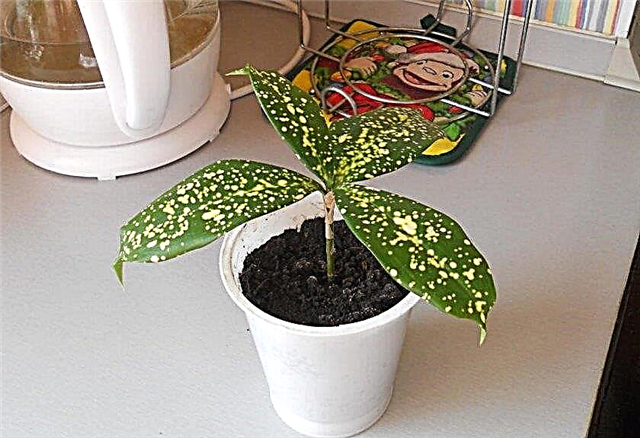
Features of the flowering period
At home, Dracaena Godsef does not bloom.
Diseases, pests and methods of dealing with them
The main advantage of the representative of Dracenes under consideration is its high resistance to diseases characteristic of domestic plants. When growing Godsefa, you can encounter several problems that can be easily eliminated by restoring the normal microclimatic regime, introducing fertilizing or moisture:
- discoloration of leaf margins to brown - The reason for this can be drafts, dry air, lack of moisture in the soil;
- yellowing and falling of leaves (more than 5 pcs per week) - lack of nutrition;
- the appearance of large bright spots on the leaves - these are sunburns, the plant urgently needs to be rearranged to another place.
For Godsefa, pests are very dangerous:
If the traces of damage by pests are too obvious, and the plant begins to die, it is better to carry out an emergency transplant with a complete replacement of an earthen coma. Dracaena Godsefa, in contrast to plants of this genus, is less whimsical, does not require pruning and garter. It quickly adapts to any microclimate conditions and is immune to diseases, which makes it very popular among gardeners.

